A 26-year old Grote Reber stands on the receiver tower used to maintain and swap receivers on his homemade radio telescope in Wheaton, Illinois. He is leaning against the resonating-cavity drum of this large telescope that he built in 1937.
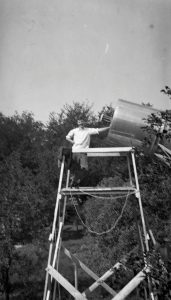
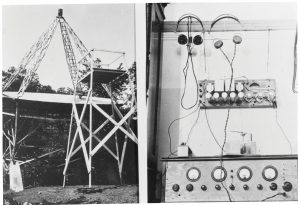
Grote Reber’s Telescope Equipment
A side-by-side set of photos of radio astronomy pioneer Grote Reber’s radio telescope and the control box for its receiver. The power supply is hanging on the wall. Reber used this system to map the structure of the Milky Way galaxy in radio waves. Reber donated the receiver to the NRAO in Green Bank where it is on exhibit in the Green Bank Science Center.
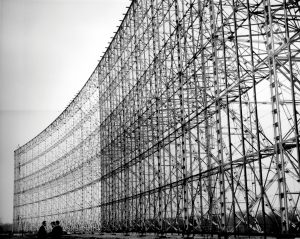
Giant Antenna in Nancay, France
In Nancay, France looms this enormous radio telescope. This portion of it is a section of a sphere that reflects the radio waves to a focus off to the left. It observes supernova remnants, star-forming regions, pulsars — really, anything that a more familiar dish-shaped radio telescope can see. In 1973, this telescope worked with our 140-foot telescope to observe the chemistry of Comet Kohoutek 1973 XII. They discovered OH, hydroxide, in the comet’s gaseous envelope.
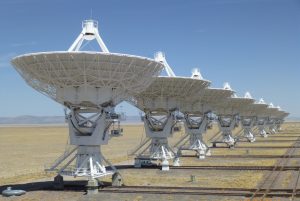
Giant Ducks in a Row
The North Arm of the Very Large Array shows perfectly aligned 25-meter antennas in their stowed position. This is D-configuration, when all 27 antennas of the VLA sit on the piers closest together, forming an array only 1km in diameter.
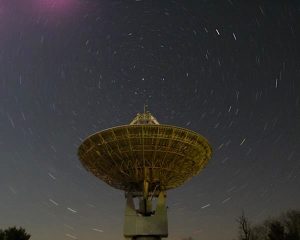
Night Sky Over the 20-meter Telescope
The 20-meter telescope in Green Bank, West Virginia is a fully-robotic instrument used by the SKYNET project out of the University of North Carolina. In this photo, facing north, the Pole Star remains nearly fixed as the Earth turns underneath it, while the rest of the stars leave trails.
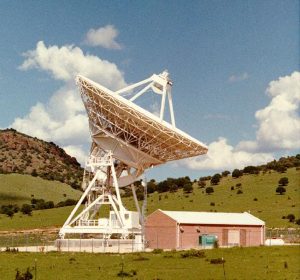
Fort Davis VLBA
In Fort Davis, Texas sits one of our ten Very Long Baseline Array telescopes.





